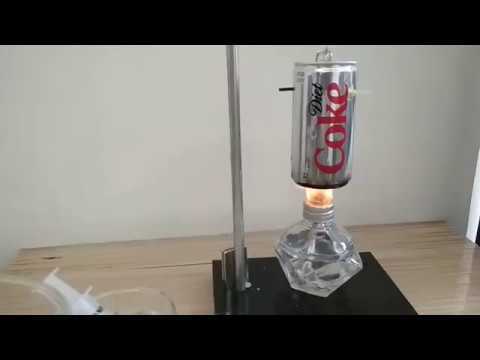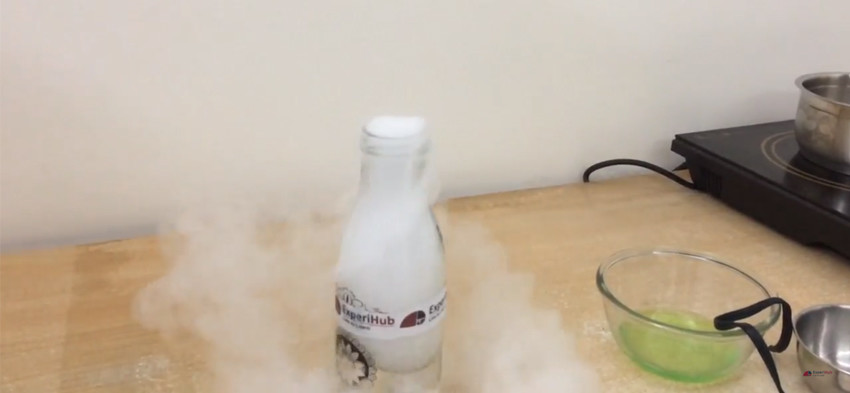Yeasts are eukaryotic, single-celled microorganisms classified as members of the fungus kingdom. Yeast is a very useful microorganism and is used to cause fermentation. Yeast grows by fermentation, feeding upon sugars. During fermentation, yeast converts glucose into ethanol and carbon dioxide and is therefore used in beer and wine…
Nitrogen gas is used for packing the packets of chips because it is an inert gas, and it prevents the oxidation of oils present in the chips. This keeps the chips fresh and has no or less breakage. Nitrogen is often filled in chips packets to prevent rancidity as it…
A well-known chemistry experiment is done by placing an egg (raw or boiled) into a container filled with Vinegar. After a few days, something exciting is observed: the egg becomes rubbery and bouncy. The eggshell is formed by calcium carbonate (CaCO3), a salt in limestone, plaster, marble, chalk,…
Soap molecules consist of a hydrophilic (“water-loving”) end and a hydrophobic (“water-fearing”) end. Water molecules are polar molecules that can dissolve other polar molecules. Fat (and oil) molecules are nonpolar molecules, so they cannot dissolve in water. Milk is a mixture of water, fat, vitamins and minerals. When soap is…
A cloud is an aerosol consisting of a visible mass of minute liquid droplets, frozen crystals, or other particles suspended in the atmosphere of a planetary body or similar space. Water or various other chemicals may compose the droplets and crystals. On Earth, clouds are formed as a result of…
Air is a mixture of many gases. The molecules of gases present in air have weak inter-molecular forces of attraction. Due to this reason these molecules lie far apart from each other i.e. there are large vacant spaces present between these molecules. So, these molecules are free to move in any direction.…
Non-metallic oxides are formed by the reaction of non-metals with oxygen. They react with a base to give salts and water. 0
A steam engine is a heat engine that performs mechanical work using steam as its working fluid. The steam engine uses the force produced by steam pressure to push a piston back and forth inside a cylinder. 0
Sublimation is the transition of a substance directly from the solid to the gas state, without passing through the liquid state. Sublimation is an endothermic process that occurs at temperatures and pressures below a substance’s triple point in its phase diagram, which corresponds to the lowest pressure at which the…
Elephant’s toothpaste is a foamy substance caused by the rapid decomposition of hydrogen peroxide using potassium iodide or yeast and warm water as a catalyst. How rapidly the reaction proceeds will depend on the concentration of hydrogen peroxide. Because it requires only a small number of ingredients and makes…
Sublimation is the transition of a substance directly from the solid to the gas state, without passing through the liquid state. Sublimation is an endothermic process that occurs at temperatures and pressures below a substance’s triple point in its phase diagram, which corresponds to the lowest pressure at…
Climate Change, in the most simple terms, is a concept revolving around the long-term changes and alterations in weather temperatures and their overall patterns. The large-scale shifts in weather patterns, global warming, and the use of greenhouse gas emissions are some of the aspects of climate change itself. It is…
Chemical Reactions are all around us. Whether it is the light from the sun or the cars that we see each day, we are surrounded by these reactions in our everyday life. Chemical Reactions, in the simplest of terms, refer to those reactions in which the bonds are immediately broken…
Conversion of Solid to Gas Sublimation 0














